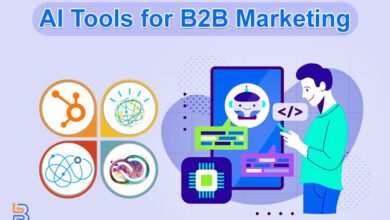AI Algorithms – Types and How They Work

AI is becoming the identity of this era of technology, which is related to the branch of computer science. Many professionals are worried about their future because of AI, as they have heard many science fiction myths. AI is going to occupy your professions and will conquer the world in the future because of its intelligence, although these myths are busted. Humans use AI in everyday routines, like facial recognition, social media algorithms, and search engines. They all run off of algorithms, but not all AI algorithms are identical. This article will tell you about AI algorithms, their types, and how they work.
AI Algorithms – An Introduction
Algorithms, in simple words, are units of commands that inform a computer how to perform a selected task. However, AI algorithms are specialized algorithms designed to enable machines to imitate human intelligence. These algorithms allow machines to research from facts, make choices, and perform duties that traditionally require human intelligence.
Types of AI Algorithms
As you know, AI is now in every field of life, trying to make it effectively comfortable. Here, you will get to know some types of AI algorithms and how they work:
Machine Learning Algorithms
Machine learning is a subset of AI focusing on developing algorithms enabling machines to learn from data. These algorithms are broadly categorized into three types:
1- Supervised Learning Algorithms
In supervised learning, the algorithm is trained on a labelled dataset, where each input collaborates with the correct output. The algorithm learns to map inputs to outputs, which makes it capable of predictions or classifications on new, unseen data. Standard algorithms in this category include Linear Regression, Decision Trees, and Support Vector Machines.
How They Work
These algorithms learn by minimizing the difference between their predictions and the actual labels in the training data. Moreover, they also learn to adjust their internal parameters during training to improve accuracy.
2- Unsupervised Learning Algorithms
There is a type of AI algorithm that enables users to understand the unstructured or hidden patterns in information. In addition, these types of AI algorithms help people analyze data in real time to get insights into various methods.
How They Work
Unsupervised learning algorithms start by grouping similar data points to reduce the dimensionality while preserving its characteristics. They do this by identifying common features or patterns in the stored data.
3- Reinforcement Learning Algorithms
Reinforcement learning algorithms are training agents to make sequential data-driven decisions to maximize the outcomes. They are being used in multiple departments, such as robotics, gaming, and autonomous systems, including Q-learning and Deep Q Network (DQN).

How They Work
Reinforcement learning algorithms train an agent that explores the environment and takes certain actions. In the end, individuals receive rewards or penalities. Moreover, the agent learns to make better and data-driven decisions by optimizing its policies.
Neural Network Algorithms
The algorithm type which is inspired by human brains and a subset of machine learning algorithms is neural network algorithms. They also consist of interconnected nodes and artificial neurons that are organized in layers. It can be a deep or shallow algorithm to use.
1- Feedforward Neural Networks (FNNs)
These are the maximum fundamental varieties of neural networks: enter, hidden, and output layers. They are used for tasks like image classification and regression.
How They Work
FNNs process input data through multiple layers of interconnected neurons. Each layer performs transformations on the data until it produces an output.
2- Convolutional Neural Networks (CNNs)
CNNs are technical neural networks programmed to process grid-like information with visual media. They are known for their exceptional performance in computer vision tasks.
How They Work
CNNs use convolutional layers to learn features from images automatically. This process allows them to recognize patterns and objects in different scales and orientations.
3- Recurrent Neural Networks (RNNs)
RNNs are developed for sequential data, such as time and natural language. They have memory cells that enable them to capture temporal dependencies in data.
How They Work
Recurrent neural networks process data in sequences that enable maintaining an internal state that carries information from previous steps. This makes them perfect for certain tasks, such as speech recognition and text generation.
4- Long Short-Term Memory (LSTM) and Gated Recurrent Unit (GRU)
LSTM and GRU are specialized RNN variants that address the vanishing gradient problem. This ability enables them to capture long-range dependencies in data.
How They Work
LSTM and GRU cells have gating mechanisms that control the flow of information. Moreover, this makes them more effective in tasks requiring longer-term memory.
Computer Vision Algorithms
Computer vision algorithms enable machines to interpret and understand visual data, such as images and videos. They are vital in applications like autonomous vehicles and facial recognition.
1- Image Classification
Image classification algorithms assign a label or category to an input image. For instance, whether the image is containing a dog or a cat.
How They Work
These algorithms use convolutional neural networks to extract features from images and classify them based on learned patterns.
2- Object Detection
As the name shows, the object detection algorithms classify objects in an image and also indicate their positions. These types of algorithms are being used in surveillance and self-driving cars.
How They Work
Object detection algorithms combine image identification with bounding box regression to classify and locate objects in an image.
Recommender Systems Algorithms
One type of AI algorithm is the Recommender Systems Algorithm, which suggests that users personalize content such as products and visual content.
1- Collaborative Filtering
Collaborative filtering algorithms make recommendations based on user behaviour and preferences, such as user-item interactions and ratings.
How They Work
These algorithms analyze user-item interaction data to identify patterns and make recommendations based on similar users’ preferences.
2- Content-Based Filtering
Content-based filtering algorithms recommend items based on their attributes and the user’s profile, matching item features with user preferences.
How They Work
These algorithms create user profiles based on past interactions and recommend items matching their preferences.
The Closing Statement
As AI technology is evolving fast, improvements in AI algorithms are also being made. Further, this evolving process causes the development of new algorithms that can process data better in a way. These AI algorithms become types of or subtypes to perform such tasks. Moreover, they enable machines to process data, analyze data, and make data-driven decisions for better outcomes. Whether a business requires improvement in healthcare, automating assignments, and innovating customer experience, AI algorithms and their types have their back.






